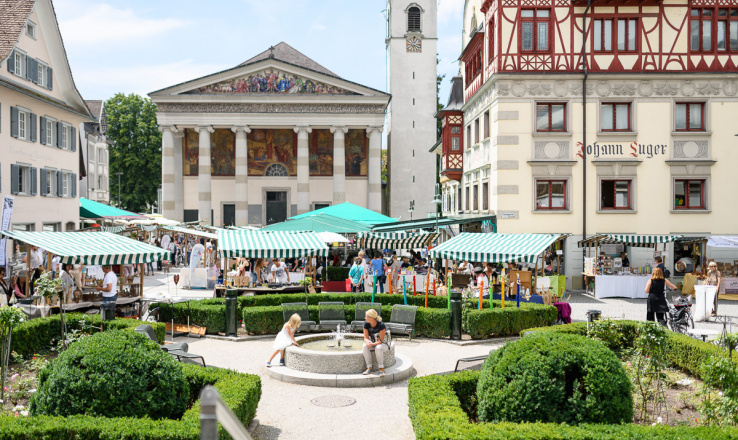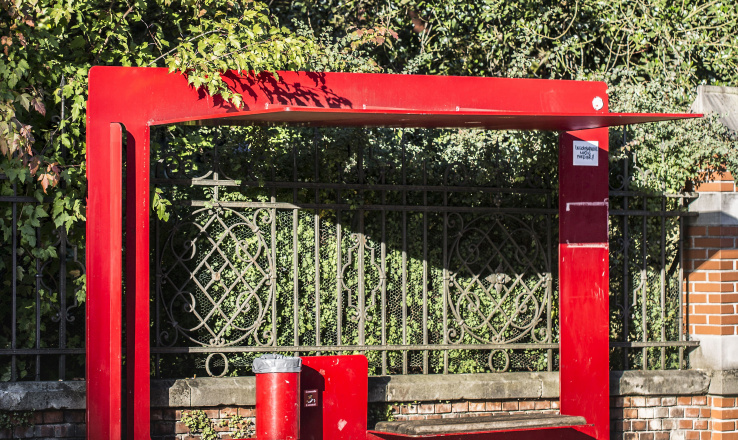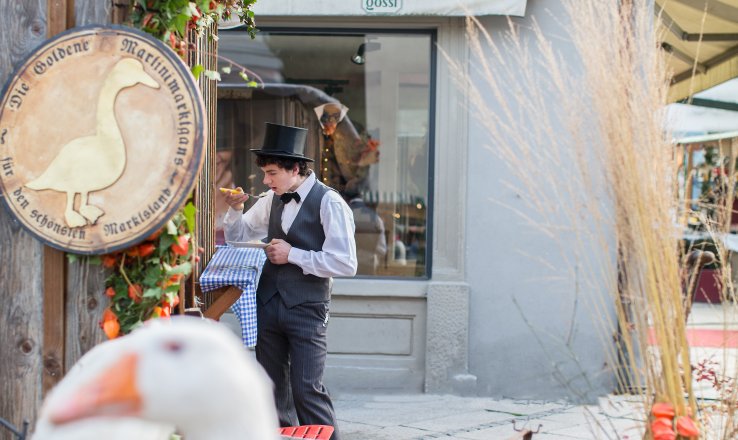The City of Dornbirn
At the heart of the Austrian Rhine Valley, Dornbirn with around 50,000 citizens is the largest city in Vorarlberg and the tenth-largest city in Austria. It plays a key role in the network of cities located around Lake Constance. Dornbirn is an innovative economic centre, trade fair city, university city and important commercial site with lots of green spots, too. It also attracts many visitors from the Lake Constance region and beyond.
Innovation, design and creativity have been central to Dornbirn for many years. In the past, new ideas in the textile sector were the source of new impulses, while today innovation in Dornbirn takes shape in research, development and even university education – with its University of Applied Sciences.
The city is also a regional leader in cultural and international diversity. And yet, a quaint, friendly atmosphere is still tangible in Dornbirn. And so, locals still cultivate their earthy dialect, in which “Dornbirn“ for example, sounds like “Dorobioro“.
It is fascinating how old and new go side by side in Dornbirn: Modern architecture designed in Vorarlberg fits seamlessly into the traditional cityscape marked by lots of gardens and parks. Dornbirn profits from its good location at the heart of the four-border region between Austria, Liechtenstein, Switzerland and Germany. Within two hours you can reach all of Lake Constance with its many attractive sights, or Zurich, Munich, Ulm, Innsbruck, Lucerne, Lugano and gems of the Swiss Alps such as Davos, St. Moritz and Arosa.
History
The city’s industrial development during the 19th century drew separate villages and quarters closer, including Markt, Oberdorf, Hatlerdorf, Haselstauden, Rohrbach, Schoren, Watzenegg, Kehlegg and Ebnit. Today Dornbirn is a modern urban city. In 1881 the first phone system in the K&K Monarchy went into service. Emperor Franz Joseph even travelled here to pay witness to the unusual event. Quick communication and new technologies already played an important role in the late 19th century. Dornbirn was an important economic centre then and has remained one to this day. In 1901, Dornbirn was declared city by imperial decree.
Architecture
From an architectural point of view, Dornbirn’s market square is one of the most interesting places in Vorarlberg. Here you can find building styles from three centuries all in one spot. The city centre is marked by a mix of old farm houses, dignified traditional buildings and innovative modern architecture. Towards the hills, lush parks envelop the posh villas of textile industrialists. Their former production halls – some of them listed historic industrial sites – can be found at the edges of town, often close to wild streams that used to provide energy for the mills. Many of these buildings have been revitalised and serve a wide range of purposes from industrial parks to museums and living space.
Exhibitions & Museums
Galleries present contemporary artists to art aficionados, while book worms can find a large selection of books and new media in Austrias’s most efficient public library. The City Museum and City Archive, located at the market square, house relevant collections and continuously present special exhibitions. Contemporary architecture is presented at vorarlberger architektur institute vai. Contemporary art can also be found at Kunstraum Dornbirn, an art initiative that has been reviving an old turbine assembly hall in the Rüschwerke with fascinating exhibitions since 2004. This architectural gem from 1893, located in the Stadtgarten, is a perfect example of Dornbirn’s industrial architecture.
Known all throughout Vorarlberg and beyond is inatura, the larger region’s most spectacular nature adventure museum. It is also located in the Stadtgarten, at the site of a former industrial area. With its appealing exhibitions, the stunning architecture and the connection between historic architectural elements and modern exhibition technologies, inatura is well worth a visit. The museum’s concept, developed by renowned international experts and supporters such as biocybernetics expert Frederic Vester and the BBC’s David Attenborough, presents an interactive experience of Vorarlberg’s nature. It is is a completely new, ground-breaking natural museum.
Economic centre & trade fair city
Until the 18th century, Dornbirn was a predominantly agricultural area and even today, approximately one quarter of the municipal area is still used for agricultural purposes. Economic growth came to the region with the textile industry. by the late 18th century first large manufactories were founded – spinning mills, dyeworks and printers. Until the 1970s these enterprises flourished, but then structural problems appeared. Nonetheless, fabrics from here find their way into French and Italian haute couture salons to this day. Structural changes strengthened modern businesses in Dornbirn and helped new ones grow. The re-purposed old production halls of the textile industry now give work to more people than during the peak of the textile era.



